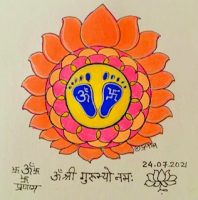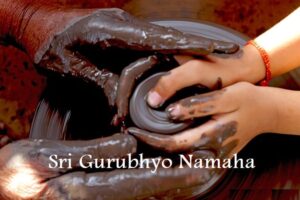Nelumbo nucifera , the sacred lotus , our national flower is unique.
Often confused with the water lily , Nymphaea stellate , lotus flowers are mostly pink and white. They have delicate petals, a glossy smooth water – resistant surface and a musky woody fragrance. Growing in murky waters , their existence is just short of miraculous. Amongst the various flower species , the lotus is the only one that can survive and blossom even after many years of dormancy and is also known to regulate the water temperature around it. All its parts are useful. The petals , stem , leaves , rhizomes , fruit and seeds are consumed in various ways in different cultures.
Interestingly, the petals of a blooming lotus close at sunset and reopen with the first rays of the sun. This bedtime phenomenon of certain plants is scientifically known as nyctinasty and is a mechanism for energy and fragrance conservation, besides protecting pollen from getting wet with dew and, for the flower itself being eaten by night-time predators. However, the exact scientific reason and purpose, is perhaps still unknown.
The vision of a lotus flower evokes a feeling of serenity and grace. The elegantly poised flowers with tall stems amidst muddy waters is reason enough for poetry and philosophy. It is omnipresent in the Indian ethos — be it in religious symbolism, decorative arts or even names.
Often mentioned in scriptures and literature, the lotus with its exquisite beauty never fails to enthral. It is frequently used as an upama, simile for comparison of beauty. For poets like Kalidas, the lissom beauty of a young woman is exalted by referring to her as a freshly blooming lotus flower, while her lips are sensuously compared to its petals.
Men are also not spared the lotus analogy, their grace enhanced by beautiful lotus eyes, hence the name Kamalnayan, given to Lord Vishnu. Lord Ram’s visage is said to be akin to a fully blossomed lotus, as quoted in the verses of the Ramayana. A popular story mentions how Ram even offered his eyes in place of the lotus, when he fell short of this important flower during a ritual to invoke Lord Shiva’s blessings.
In ancient India, art and literature had a symbiotic relationship. Hence, based on the rules of Shilpa shastras, poets and philosophers often interpreted and transferred their thoughts from the sublime to the realm of the plastic arts. No wonder we see representations of this beautiful flower in various mediums.
The lotus, known by its many names – Pushkara, Kamala, Padma, Utpala, is quintessentially held in the hands of all iconographic representations of most Hindu deities. There are various reasons for these associations. The flower represents purity, grace, blossoming and detachment — growing in murky waters yet remaining untouched by the dirt all around. The imagery encourages us to remain thus.
Amongst all the deities, a few are represented seated on a lotus flower. The first among these is Lord Brahma who is the Lord of creation. He seats himself on a white lotus whose stem is the umbilical cord connected to the navel of Vishnu, the protector and preserver – Lord of perfection, as if saying that creation can happen only through a connection with perfection running consistently through all our tasks. He is also known as syambhu – self-born and Kamalyoni – the one born of a lotus. The flower signifies a divine connection, since it is only visible on the surface, and the stem and roots go deep within, as if to another world.
Goddess Saraswati, too is seated on a beautiful lotus. She signifies wisdom and the arts. Wisdom dawns when there is detachment, and creativity blossoms when we stay unaffected by the chaos around.
Finally, the Goddess of resources and the consort of Lord Vishnu, Shree Lakshmi, also named after the lotus – Kamala, stands gracefully on a fully blooming pink lotus in blue waters. The energy of wealth is to be bestowed with complete detachment to those who are deserving, so that they can use it to help blossom humanity as a whole. The calm waters seem to state that well used resources create an amicable environment all around, much like the aforementioned quality of temperature regulation of the lotus plant.
In mythology, the lotus leaf is said to be symbolic of the role of cosmic waters that have said to support the Earth by making it steady. Hence the infant Krishna is often shown floating on a large firm lotus leaf, signifying a safe birth amidst the trauma of separation from his parents.
The lotus is abundantly represented in all Buddhist iconography also. The Lotus-Capital also known as the Lion- Capital, used as the National Emblem of India, shows four lions facing in four directions, on a base of an inverted lotus. The lion represents Sakyasimha, the lion king or Buddha and the four lions represent establishment of dharma in each direction. The Buddha too is often depicted seated on or holding a lotus.
There are other references to the flower, especially as a representation of the energy pools or chakras in the human body. This is primarily reflective of the quality of the lotus seeds to bloom even after years of dormancy – signifying that human potential too has the capacity to blossom at any stage of life. Visualised in deep dhyan, the seer-scientists of yore saw a co-relation of this flower with a specific number of petals associated with each chakras. Each petal unfolding symbolises certain qualities. They saw, that hormones, in perfect quantity, when released into the blood stream form the associated ductless glands created an pattern similar to lotus petals.
The root or the Muladhar Chakra is situated at the base of the coccyx, it is the first of the human Chakras. It forms the border between animal and human consciousness.
In the symbolic picture of the Muladhara Chakra there is a Lotus with four petals. These represent the four functions of the psyche: mind, manas, intellect, buddhi, consciousness, chitt and ego, ahamkar – all of which originate in this Chakra. The Chakra’s colour is red, that symbolises awakening of the sleeping chetna, consciousness to active, alert chetna.
The Svadhishthan Chakra is situated at the lower end of the Sacrum. It marks the second level of our development. The evolution of consciousness towards pure, human consciousness begins here. It is the seat of the subconscious mind — where all life experiences and impressions since the beginning of our existence since conception are stored. It also represents balance between desires and karm. The symbolic picture of the Svadhishthan Chakra has a Lotus with six petals. These represent our negative qualities which are to be overcome – anger, hatred, jealousy, cruelty, desire and pride, along with lethargy, fear, doubt, revenge, envy and greed.
The Manipur Chakra is situated just above the navel and below the diaphragm. Our consciousness reaches the Manipur Chakra by overcoming the negative aspects of the Svadhishthan. The Manipur Chakra contains many precious aspects such as the qualities of clarity, self-confidence, self-assurance, knowledge and wisdom.
It is also the centre of vitality. It controls our energy balance to strengthen and consolidate our health.
In the symbolic picture of the Chakra there is a Lotus with ten petals. These represent the ten systems, the vital forces, which control and nourish all functions of the human body.
The Anahat Chakra is situated in the centre of the chest, close to the heart. The colour of this chakra is green.
In the representative image there is a Lotus with twelve petals. These represent the Divine qualities of the heart, such as bliss, peace, harmony, love, understanding, empathy, unity, compassion, kindness and forgiveness. However, the Heart Centre is also the centre for service. All saints have this chakra activated.
The Vishuddhi Chakra is situated in the throat. The colour of Vishuddhi is light blue. This Chakra is the starting point of Udana Prana. It is a function of this Prana to purify the body of toxic substances while breathing. Purification not only occurs on the physical level, but also on the level of the psyche and mind. All problems and unpleasant experiences that we have “swallowed” and suppressed during our life since conception, continue to exist in the subconscious mind until they are faced and resolved with wisdom.
The Vishuddhi Chakra unleashes an unlimited feeling of joy and freedom. Along with this, there is a clear voice, talent for singing, as well as balanced and calm thoughts and strength of speaking truth, vak siddhi.
In the symbolic picture of this Chakra is a Lotus with sixteen petals. These represent the sixteen potential abilities, klas that a human can develop.
The Agya Chakra is situated in the middle of the forehead, between the eyebrows. For this reason it is also known as the “third eye”. It is the centre of clarity, purity, intuition and wisdom. It forms the boundary between human and opening gate towards Divine realm, towards merging with Supreme consciousness.
In the symbolic picture of the Agya Chakra there is a Lotus with two petals, indicating that at this level of consciousness there exists “only two”, Atma, self and Paramatma, Supreme.
The Bindu Chakra is situated beneath the whirl of hair at the tip of the head. In the picture of the Bindu is a lotus with twenty-three petals.
The Bindu Chakra is an important centre for health, giving us the power for physical and mental recuperation. This Chakra quietens the emotions and promotes inner harmony, clarity and balance.
The Sahasrara Chakra is located on the top of the head. It is also known as the “Thousand-Petalled Lotus”, “Brahmarandhra” the door to Supreme, because it radiates like the Sun, no other light comes close to the brilliance of the Sun. In the same way, the energy and radiation of all other Chakras pale in the radiance of the Sahasrara Chakra. Awakening it is being deserving to absorb the 1000 qualities of Vishnu.
In the Sahasrara Chakra the thousand-petalled Lotus blooms as a symbol of complete, unfolding Consciousness.
The metaphysical aspects of the Lotus flower signify various attributes — from non-attachment, beauty, enhancement of beauty, as a decorative element to being a symbol of immortality. Similarly, the way a lotus is drawn can state a lot about the spiritual evolution of a sadhak. Concentrating on the lotus and drawing it frequently vibrates certain powerful nadis, nerves of the brain that are not frequently used by humans. So a lotus empowers the capacity to use the full potential of the brain.
To a Lotus lover, its subtle poetry, deep messages and silent resilience are a source of constant strength and a reminder of one’s true spiritual potential. The Sacred Lotus is therefore a symbol of blossoming and yet being humble about it, contracting back to the base, to be centred when required. Contraction and dilation, are laws of Nature. Though a sadhak can and should play fearlessly in the world but, when ‘’darkness,’’ inertia engulfs, collect and consolidate the self to go inwards, re-charging the being. Perhaps this is why the lotus closes itself at sunset! May the Sacred Lotus always inspire us.




